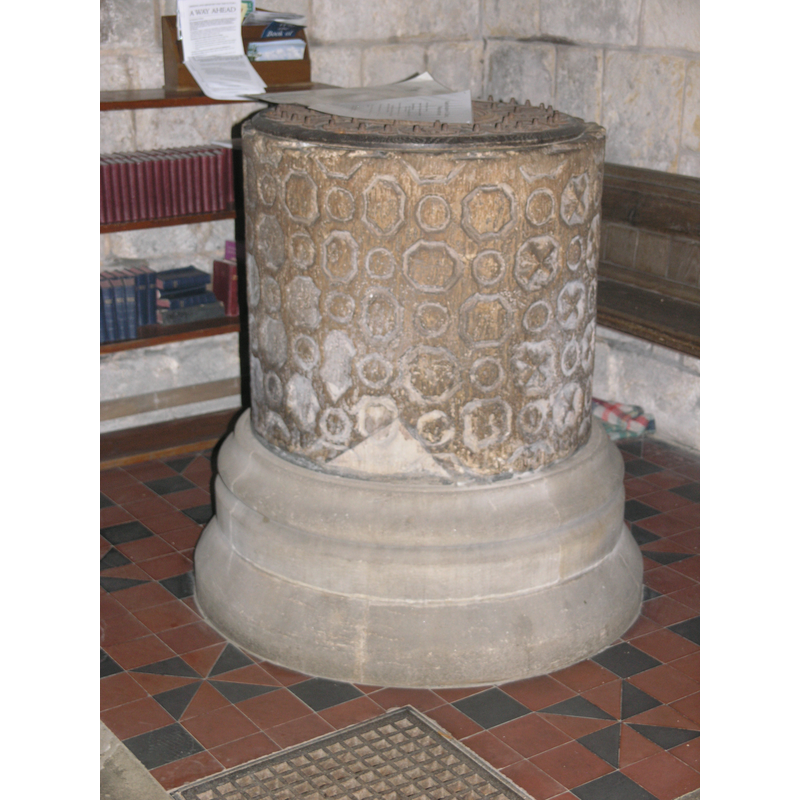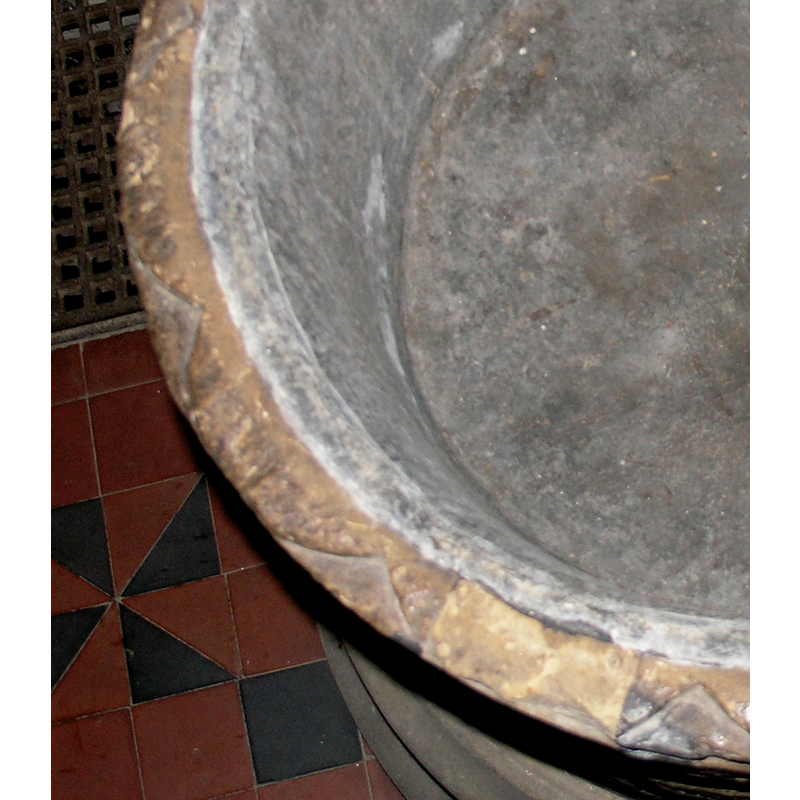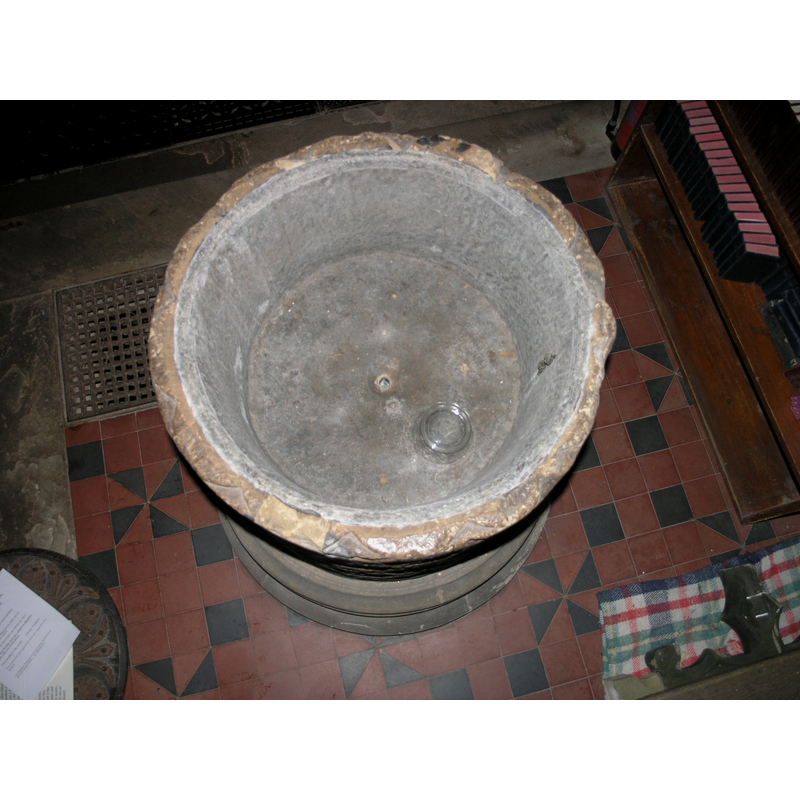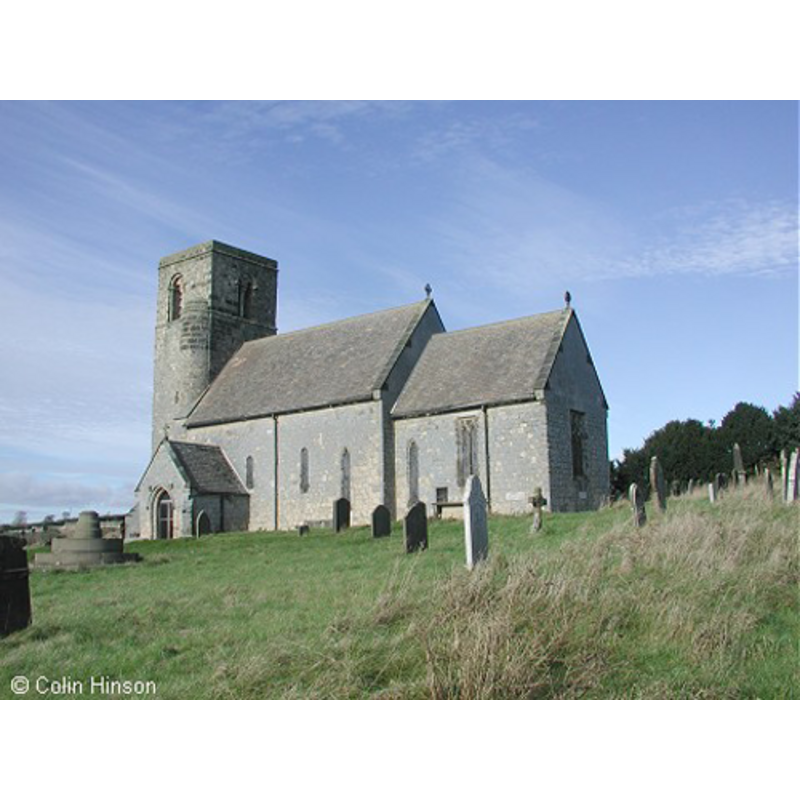Weaverthorpe / Wifretorp

Image copyright © Colin Hinson, 2009
Standing permission
Results: 6 records
design element - motifs - scallop
Scene Description: large ones, around the upper rim surface; some damaged; shows where the new-stone insert to repair the cover staple holes was made
Copyright Statement: Image copyright © Colin Hinson, 2009
Image Source: sdetail of a digital photograph taken 24 October 2009 by Colin Hinson
Copyright Instructions: Standing permission
design element - patterns - diaper - varied
view of basin - interior
view of church exterior - southeast view
view of church interior - nave - looking southwest
INFORMATION
FontID: 01926WEA
Object Type: Baptismal Font1
Church/Chapel: Parish Church of St. Andrew
Church Patron Saints: St. Andrew
Church Location: Weaverthorpe, Malton YO17 8ES, United Kingdom
Country Name: England
Location: North Yorkshire [form. in the E. R. of Yorkshire], Yorkshire and the Humber
Directions to Site: Located about 15 km E of Norton (follow the B1248 E; right past North Grimston change to the 1253 -dir. Bridlington- continue about 4-5 km past Sledmere to the third left turn; it leads to Weaverthorpe)
Historical Region: Hundred of Toreshou [in Domesday] -- formerly in the East Riding of Yorkshire
Font Location in Church: Inside the church, at the W end of the nave, S side
Century and Period: 11th - 12th century, Norman
Cognate Fonts: The fonts at Nafferton, Bainton, Barmston, Carnaby and Rudston, all in Yorkshire, have similar ornamentation.
Credit and Acknowledgements: We are grateful to Colin Hinson, of www.yorkshireCDbooks.com, for his photographs of church and font
Church Notes: church documented ca. 1109
Font Notes:
Click to view
The entry for this village in the Domesday survey [https://opendomesday.org/place/SE9671/weaverthorpe/] [accessed 17 February 2025] reports "1 church. 0.5 church lands" in it. Listed in Cox & Harvey (1907) as a baptismal font of the Norman period. Hobson (1924) notes: "a Norm[an] font, with a diaper of circles and diagons, like that at Rudston." Described in Tyrrell-Green (1928) as a diapered font with "a very rich effect being produced by the insertion of small crosses or other figures and emblems within the trellis pattern". This same source (ibid.) mentions that the fonts at Nafferton, Bainton, Barmston, Carnaby and Rudston(e), all in Yorkshire, have similar ornamentation. An article by Wally Simpkin in the Driffield Post-Driffield Times [http://www.driffieldtoday.co.uk/wally-simpkins-look-at-east-riding-history/Ancient-fonts.2085398.jp] [accessed 1 July 2008] notes: "The ornamentation is elaborate and peculiar. It consists of a series of alternate octagons and circles, 11 of each, deposited five deep. Six or seven of the octagons in each row, which were intended to face the east and body of the church, contain a kind of Maltese cross. The others at the back are left blank. The octagons are very roughly engraved and much defaced". The entry for this church in Historic England [Listing NGR: SE9666571103] informs: "Church. C12 tower, nave and chancel. Re-roofed and north wall above plinth rebuilt 1872 [...] Norman drum font with sophisticated pattern of low relief circles and octagons, some enclosing saltire crosses." The entry for this church in the CRSBI [https://www.crsbi.ac.uk/view-item?i=3209] [accessed 17 February 2025] informs: "A cylindrical font with patterns covering the sides and rim; it stands on a modern moulded plinth. There is some damage, repaired on the NE side but left rough on the SW. The pattern appears to be based on a grid with alternating small circles and larger octagons, with five rows of motifs running round the cylinder. For approximately three-quarters of the circumference the octagons have saltire crosses carved within them; where the octagons were left plain and sunken, the effect is reminiscent of 17thc strapwork. The circles were developed into low domes. The horizontal rim has a shallow rebate for the lead lining; outside this is a series of a dozen or so flat scallops or lunettes now somewhat worn". The CRSBI entry quotes from J. Bilson, 'Weaverthorpe church and its builder', Archaeologia 72 (1922) 51-70: "Bilson describes this: "Font: as usual, the last thing made for the new church’ (Bilson 1922, 57). He also says this of Newbald, where the church was not built in one campaign and the font almost certainly belongs to the later period. Weaverthorpe font comes from a workshop that used pattern, and it was probably not the work of the masons who made the building: given the contrast in style, the font may not have been part of the original fittings for the building. Perhaps it was installed or recarved when the Augustinians received the church in 1121. It strongly resembles the font at Rudston, where all the patterns are otherwise uniquely found; it seems very probable that the two fonts are contemporary. Rudston font appears more competent, so perhaps the font at Weaverthorpe was a copy or an apprentice piece."
COORDINATES
Church Latitude & Longitude Decimal: 54.126670, -0.521772
Church Latitude & Longitude DMS: 54° 7' 36.0" N, 0° 31' 18.4" W
MEDIUM AND MEASUREMENTS
Material: stone, type unknown
Font Shape: cylindrical (mounted)
Basin Interior Shape: round
Basin Exterior Shape: round
Drainage Notes: lead-lined
LID INFORMATION
Date: modern?
Material: wood
Apparatus: no
Notes: round and flat, with metal decoration; appears modern
REFERENCES
Corpus of Romanesque Sculpture in Britain and Ireland, The Corpus of Romanesque Sculpture in Britain and Ireland, The Corpus of Romanesque Sculpture in Britain and Ireland. Accessed: 2025-02-17 00:00:00. URL: http://www.crsbi.ac.uk.
Cox, John Charles, English Church Furniture, New York: E.P. Dutton & Co., 1907
Hobson, Bernard, The East Riding of Yorkshire (with York), Cambridge: At the University Press, 1924
Mann, Faith, Early Medieval Church Sculpture: a Study of 12th Century Fragments in East Yorkshire, Beverley: Hutton Press, 1985
Tyrrell-Green, E., Baptismal Fonts Classified and Illustrated, London: Society for Promoting Christian Knowledge: The Macmillan Co., 1928

![[cf. Font notes]](/static-50478a99ec6f36a15d6234548c59f63da52304e5/compressed/1091125008_compressed.png)


